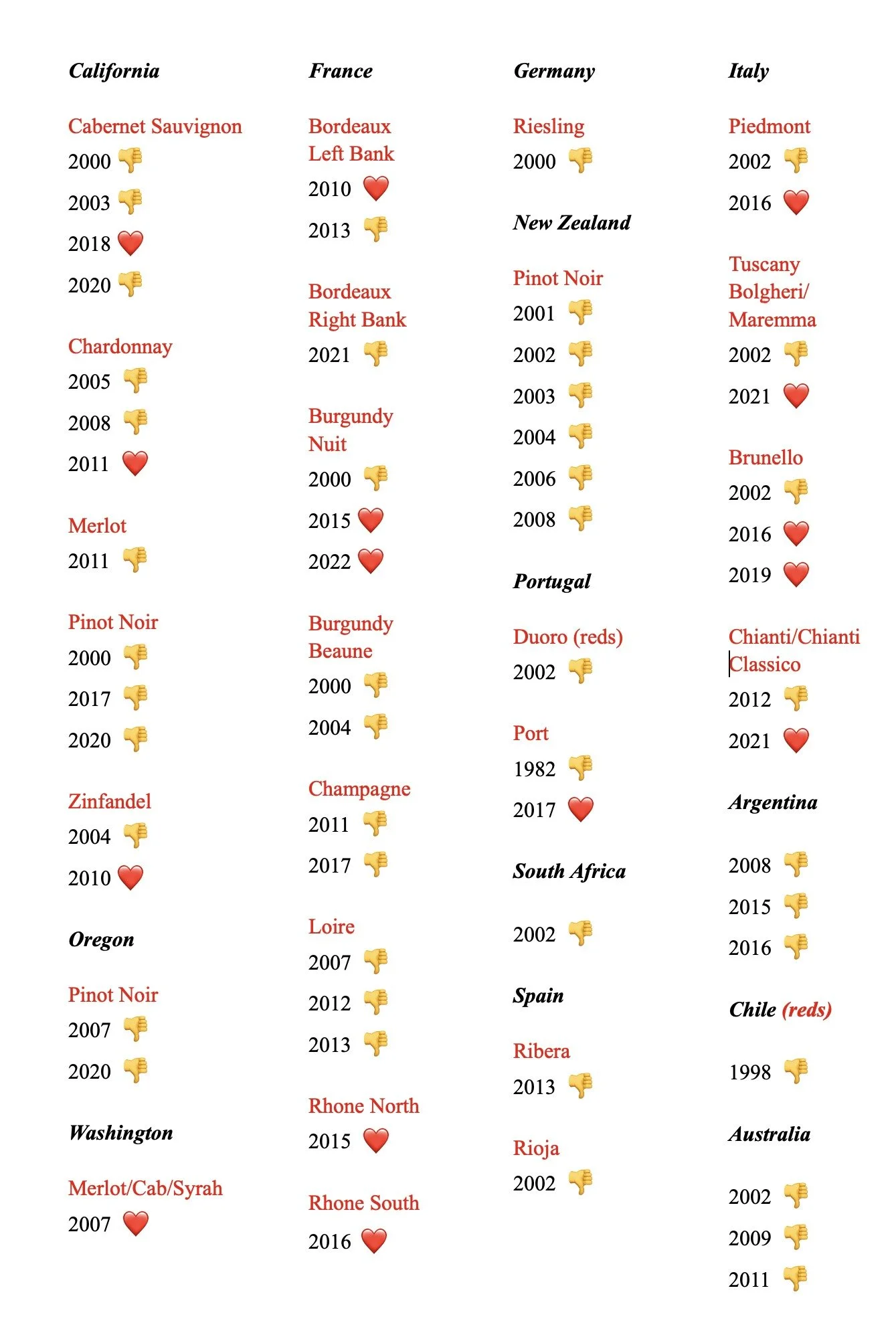Why Vintage Ratings Should Factor Into Your Wine Purchase
A wine vintage refers to the year that the grapes for the wine were harvested. So why should vintage ratings be important in your wine purchase? Simply, the quality and taste of the wine you drink regardless of the price point is only as good as the grapes that are used. A particularly high vintage rating is a key indicator of a potentially outstanding wine. A very low vintage rating usually translates to a marginal wine. You want to allocate your wine purchase dollars intelligently.
Decades ago, the common belief was that vintage was only important for Old-World wines, those from France, Italy, Germany, etc. and were not relevant for wines from the New-World such as the United States, Argentina, Australia, etc. New-World wines tended to be blended across multiple vineyards and weather, especially in California, was thought to be very predictable and consistent. That is patently incorrect today. Old-World wines continue to be terroir-focused, e.g. wines produced from single vineyards possessing unique microclimates and therefore why specific aspects of weather is so important given the localized nature of wine production. Today, California and other New-World producers recognize the value of terroir over just grape variety. This practice now aligns more closely with the historic nature of terroir-driven Old-World wines. Vintage does matter!
What are the components that impact vintage ratings?
The most prominent is certainly weather. Variations in sunshine, rainfall, hailstorms, wind and timing thereof are the most critical factors. Over the last decade several wine regions throughout France have experienced significant drought conditions negatively impacting both the quantity and quality of the grapes. But extraordinary events like wildfires in Northern California have also affected many vineyards with smoke damage across many miles from the actual fires having equally devasted wine quality.
Weather conditions and extraordinary events are a tangible, measurable component but there still is a subjective aspect in identifying the quality of the vintage. Wineries, both New and Old-World, and the associated vineyards, have an “institutional memory”. Weather conditions are factored in and compared to historical years from five, ten, even forty years ago and will provide some indication of the expected quality of wine produced.
Using both the measurable factors and the historical knowledge of what past wines tasted like, a vintner can confidently extrapolate what the wine quality should be and make critical decisions in the vineyard and the winery based on this.
The decision-making process by the winemaker
There are typically three outcomes when the winery identifies particularly poor vintages. The first is to continue to bottle, quality be damned. This is quite rare and almost non-existent in the Old-World but possible with lower-quality wine in the New-World. The second possibility is that the winery takes an economic hit to preserve the integrity of its wine by selling its grapes to a bulk wine producer. This may salvage some economic value and will more importantly, maintain their reputation by not introducing an inferior wine in the marketplace under their label. The third possibility is that a winery will limit its production to only the best grapes available and produce limited volumes of a decent tasting wine.
So how to use vintage ratings in your wine purchase decision
Clients inquire about what vintages are really good or may be particularly bad. Similar to my reasoning that I, and most wine-oriented consumers cannot taste the difference between a 90 point and a 95-point rated wine, we invariably cannot discern vintage quality within that same range. Nor can most ever remember the specific vintage ratings across a broad spectrum of wine countries and regions.
But what can be easily referenced are the especially outstanding vintages and the especially bad vintages. The chart summarized below indicates only the extremes of vintage ratings ignoring the broad spectrum of decent vintages. It can be used as a quick, easy reference point and is broadly based on the most prominent regions or generically the country itself.

